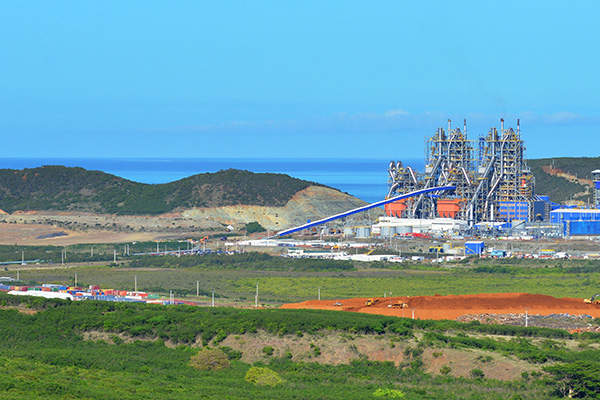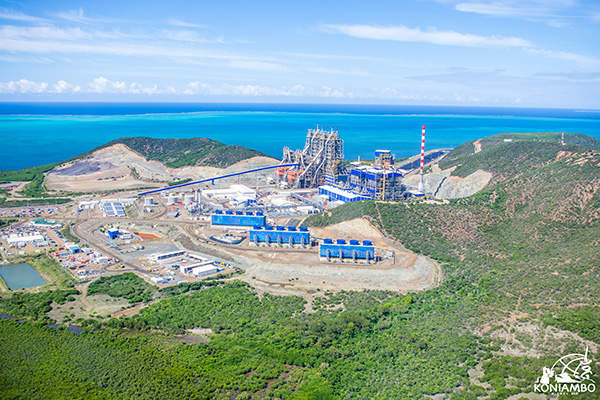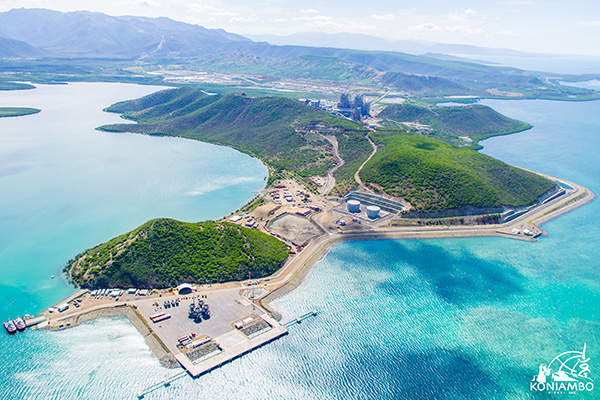
Comprised an open-cut nickel mine and a pyrometallurgical plant, Koniambo Nickel Project is located in the North Province of New Caledonia and was officially inaugurated in November 2014. It is one of the world’s biggest and highest-grade undeveloped nickel laterite deposits.
The $7bn greenfield mining project was developed by Koniambo Nickel SAS, a 51:49 joint venture between Société Minière du Sud Pacifique (SMSP) and Glencore (formerly Xstrata Nickel), which is the world’s richest mining company as of 2014. Glencore also financed the majority of the project cost.
Construction of the project began in 2007 and the first production line of the smelter was completed in November 2012, while the first metal was tapped in April 2013. The construction of the second production line at the smelter was completed in November 2013.
Approximately 2,750 direct local jobs and 1,500 indirect jobs are believed to have been created during the construction phase of the project.
Production from the ferronickel project
Considered to be world’s one of the lowest cost nickel mining operation, Koniambo is expected to produce 60,000t of nickel in ferronickel per annum over its mine life of 25 years.
Geology and reserves of the New Caledonian mine
Koniambo is located on the 20km-long and 5km-wide Koniambo massif in the North Province of New Caledonia, which is situated 930m above sea level and 15km away from the shore.
Economically potential laterite is found along the ridge of the massif and on isolated terraces on the west in scattered pockets, with the quality of the nickel, cobalt, iron and other oxidised ores varying with depth. The high-grade nickel laterite mineralisation of the Koniambo ore body is spread over an area of 21km².
The open-pit nickel mine was estimated to hold 61.5 million tonnes (Mt) of proven and probable ore reserves grading 2.36% Ni, as of December 2013. Measured and indicated resources stood at 70Mt grading 2.47% Ni, whereas inferred resources were estimated at 83Mt grading 2.5% Ni.
Mining and processing
Open-pit mining method involving truck and shovel operations is employed to extract ore from multiple pits in the massif. Overburden soil is removed before the underlying rock is weakened by explosives and mined using hydraulic shovels.
The saprolite ore is selectively separated from the sterile rock and limonite and loaded on to 100t dumper trucks, which transport the ore material to the nearby ore preparation plant. The facility produces 3.3Mt of wet ore a year from 25Mt ore and waste rock it receives from the mine.
Wet ore from the preparation plant is then screened and crushed before being conveyed via a 12km-long overland conveyor at a speed of 4m/s to the metallurgical plant site in Vavouto Industrial Area where it is stacked in two blending piles each capable of holding up to 60,000t of ore.
The metallurgical plant employs nickel smelting technology (NST) for ore processing and houses milling, drying, calcining and smelting facilities.
The wet ore is first ground to less than 1mm in size and dried until its moisture content is less than 1%. It is done in a single process using hammer mill flash dryers (HMFDs), which heat up the ore from 25°C to 160°C using a flow of hot gases produced by a coal-fired power plant at the mine site. Fabric filter plants or baghouses collect the powdered nickel ore in the gas from the HMFDs.
A pneumatic conveyor or lift feeds the dry ore into the calciner where it is completely dehydrated at 1,000°C. The ore is then injected onto fluid bed reducers where the volume of iron oxides is removed using hot gases and pulverised coal.
The ore particles are smelted in an electric furnace heated to 1,600°C to convert the metal into ferronickel, which is then transported by an overhead travelling crane to a refinery where sulphur is removed in desulphurising furnaces.
The refined ferronickel is broken into fragments or pellets, and converted into shots and graded according to grain size in a shotting unit. The metallurgical plant is expected to produce about 176,000t of ferronickel shots a year.
Barnes Hill nickel-cobalt mine is located in the Tamar Development Corridor and is situated near Beaconsfield in Tasmania, Australia.
The ferronickel shots are stored in silos and then packaged in two-tonne bags before being shipped to customers from the Vavouto Port.
Associated infrastructure facilities
Two 132MW circulating fluid bed boiler coal-fired power plants and two back-up 40MW diesel-fired generators have been installed to meet the electricity requirement of the Koniambo mining operation. Inverse osmosis desalination plants supply freshwater for the operations.
A deep water private port was built for import of coal supplies and export of ferronickel product.
Additional infrastructure facilities include mine access roads, coal pulverisation plant, cooling water systems, coal stockpiling facilities and diesel fuel storage yards.
Contractors involved
A joint venture (JV) of Hatch and Technip was awarded the engineering, procurement, construction and project management services (EPCM) contract for the Koniambo nickel smelter in June 2005. Dockwise won the logistical management contract from the Hatch-Technip joint venture.
A JV between construction firms Socalmo and McConnell Dowell was awarded three construction packages involving the construction of an ore preparation plant, overland conveyors, wet ore stockpile, coal stockpile, storage tanks, as well as above and underground pipe works.
Wenco International Mining Systems was contracted to provide fleet management solution. Outotec supplied three custom-designed fabric filter plants for the metallurgical plant. Golder Associates provided geotechnical, environmental, permitting and design services for the project.
DSI Australia supplied pre-stressed permanent anchors and micropiles for the metallurgical plant and the power station.











